May Queens, 1913-1934
Note to readers: In May 2013, Rod Library Special Collections Library Assistant Joy Lynn researched, developed, and put up a display relating to May Queens at the Iowa State Teachers College (now University of Northern Iowa) from 1913 through 1934. This Web page preserves the information and images presented in that display. The original display and this Web page do not constitute an exhaustive history of May Day celebrations on the UNI campus. Rather, its purpose is to focus on the young women who were elected as queens of the May celebrations, and, along the way, simply to give some highlights of the celebrations. For another look at both May Day and the later event called SUNI Daze, see Spring Celebrations at the University of Northern Iowa.
Introduction
Informal May Day celebrations took place on the campus of what is now the University of Northern Iowa at least as early as 1893. In that year the student newspaper reported that some students left May baskets on doorknobs. The celebrations continued sporadically and relatively informally over the next few years, especially among the students in the training school and the children in the neighborhood around campus. There was a more formal celebration in 1908, when, on the southeast corner of campus, advanced rhythm classes from the women's Physical Training Department performed classical dance pieces around a Maypole. The performance, according to the student newspaper, reached "the highest degree of art".
1913
In the spring of 1913, however, the school had something special to celebrate. Earlier that year, in what later came to be called the Coordination Controversy, the Iowa General Assembly had seriously considered reducing the mission of the Iowa State Teachers College to that of a two year school. Some members of the legislature believed that a two year curriculum was sufficient to prepare teachers for most of the public schools in Iowa. If a student wanted more teacher preparatory work, he or she could finish a four year study at the University of Iowa. The battle in the General Assembly was touch and go, but, finally, the measures did not pass. The Teachers College, as a four year school, was preserved. With spring on the way, the school decided to put on a big show.
In late April 1913, the student newspaper encouraged students to put aside their schoolwork for one day and to have fun instead. School would be dismissed for the day. Seniors would be in charge of arrangements. The celebration would start with a parade around Cedar Falls. Literary societies and other groups would build and then display floats in the parade. There would be a picnic lunch at noon, with food available at food booths on campus. Profits from the booths would go toward the construction of a decorative campus gateway. Dances around the Maypole would highlight the afternoon. Then there would be a tennis tournament and a baseball game. The day would conclude with a concert by the Cedar Falls Municipal Band on the Library (now Seerley Hall) front steps. Mrs. Jesse Walters was elected May queen.
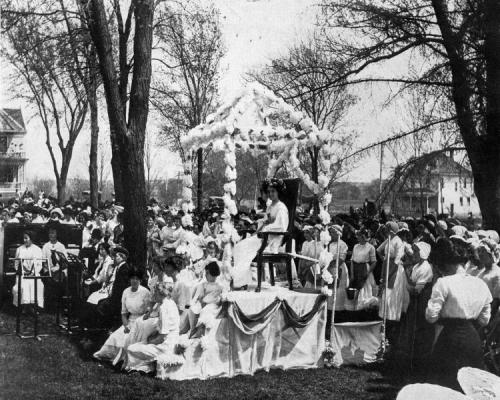
A strong afternoon wind made it hard for the dancers, with their flowing costumes, to perform at their best, but everything else went well. Most Cedar Falls businesses closed for the afternoon and a very large crowd gathered on campus. The Cedar Falls baseball team defeated the Teachers College team, 5-4. Everyone enjoyed the band concert in the evening.
It might seem odd for a married woman to be elected May Queen. After all, few married women attended the Teachers College at that time. But Mrs. Walters was a special case. Under her birth name, Blanche Black, she had attended the Teachers College in 1908-1909. There she met and then married Jesse H. Walters, a son of faculty member G. W. Walters. Unfortunately, Jesse Walters died unexpectedly in March 1911. Mrs. Walters then returned to school and graduated with the Class of 1913. She was popular with her classmates both before and then after her marriage. After her graduation, she pursued a successful career in education.
1914
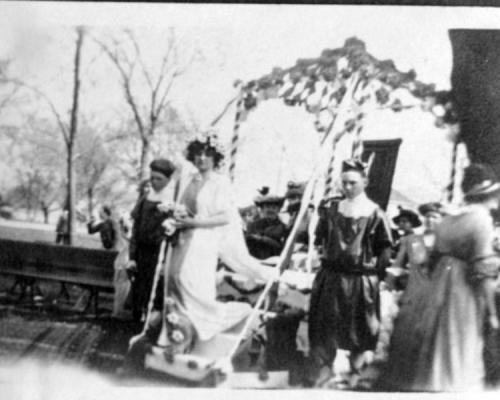
The
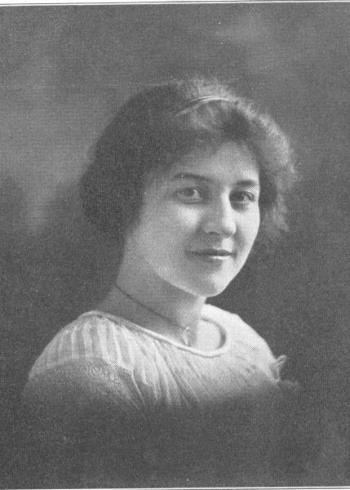
1914 May Day celebration also went well. There was a long parade that began near campus and went all the way down to the north end of Main Street in Cedar Falls. President Seerley rode in the lead automobile. The next auto held May Queen Hazel Strayer, with a beautiful display of flowers. Thousands of people lined the streets. After the Maypole dances, the College Band entertained the audience.
Hazel Strayer went on to become a long-term and much beloved member of the Teachers College drama faculty. The memory of her work on campus led to the naming of the Strayer-Wood Theatre in her honor.
1915
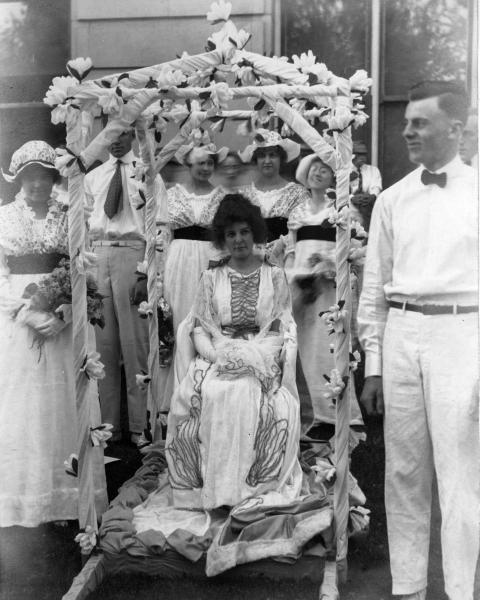
The 1915 celebration also went well. The program was quite similar: a long parade followed by a dance program. A reporter from the student newspaper, perhaps a bit overenthusiastic, wrote that it exceeded the celebrations of the previous two years.
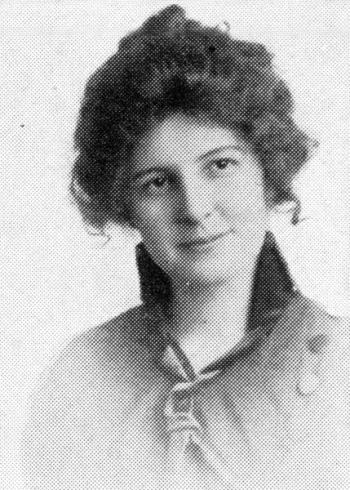
Irene Bell Simpson was elected May Queen by a large majority of student voters. She was described as an "allround student, interested in school activities and the welfare of those about her". Following her graduation in 1915, she worked as a YWCA secretary and then married George Hendrickson of Ames, Iowa. She and her husband attended the Teachers College Alumni Association's reunion on campus in 1940.
1916-1918
The May Day festival was held again in 1916. There was a parade, but instead of ceremonies relating to the crowing of the May Queen, the seniors put on an operetta, "The Contest of Nations". With what would later be called World War I, the title of the operetta seemed especially appropriate. But this dramatic "contest of nations", presented outdoors, was a poetic tribute to national strengths in singing and dancing, rather than in armaments. It provided the opportunity for over two hundred student to display their talents.
A full program was planned for 1917, including a May Queen, but it does not seem to have been produced. Students just seemed to be crabby with each other in the spring of 1917. There was a forty cent levy on each student to defray program expenses, but many were reluctant to pay. Perhaps the entrance of the United States into the war April 1917 had something to do with the situation. Some students wanted to continue a relatively care-free college life. Others may have begun to understand the implications of the war that was looming in their immediate future.
In 1918, with the United States fully engaged in the war in Europe, the college celebrated a Patriotic Day. Speeches, dancing, and music all had patriotic overtones. But a machine gun demonstration on the Cedar Falls fairgrounds was probably the highlight of the day.
1919
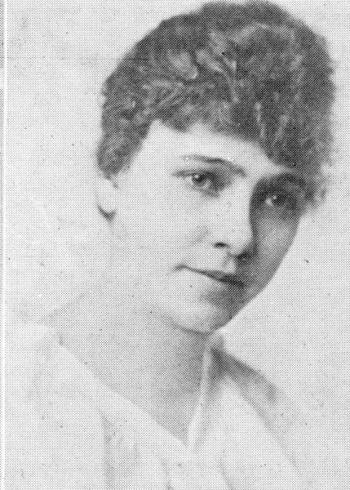
With the armistice on November 11, 1918, the May Day celebration of 1919 was free to get back to normal. There was no parade. May Queen Alva Gaarder was crowned in the morning instead of the afternoon. There was a picnic followed by a Maypole dance featuring 530 participants in costume. There was also a baseball game and an evening concert.
Alva Berdette Gaarder was a senior home economics major from Kensett, Iowa. She was strong in both scholastic work and student organizational activities. She and two of her sisters, Ida and Grace, attended the Teachers College.
1920
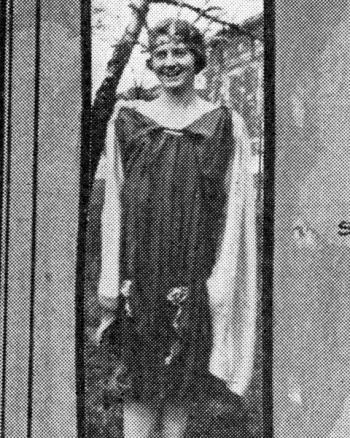
A regular, full program was also planned for 1920. Heavy rain dampened spirits and reduced the size of the crowd. The dance program was moved to the second floor of the Gymnasium (now the Innovative Teaching and Technology Center). Because of limited space for those who wished to attend, the program was staged twice. The picnic dinner was served in various locations within the classroom buildings.
Winnifred Martha Tuttle, who had been president of the campus YWCA, was elected queen. The student newspaper commented that she carried out her duties as queen with the dignity and smile for which she was known. Miss Tuttle had been very active in drama productions on campus and had already secured a teaching position in Odebolt, Iowa. She eventually moved on to become a principal in the Clarion, Iowa, schools. And, during the summers, she taught for the Teachers College Extension Service in its Branch Summer Schools. In an interesting turn of events. Miss Tuttle joined the Teachers College English faculty on a temporary basis in 1927 as a replacement for an earlier May queen, Hazel Strayer, who was on leave for European travel. Miss Tuttle's work impressed college administrators to the extent that she joined the faculty on a regular basis. She produced an amazing amount of drama work over the next few years. In 1933, she married Irving Harlow Hart, who was head of the Teachers College Extension Service. She and Mr. Hart likely met initially when she was serving in the Extension Service Branch Summer Schools. According to administrative rules at that time, she, now married to another faculty member, could no longer serve on the faculty. Consequently, she resigned from her position. She died in 1972.
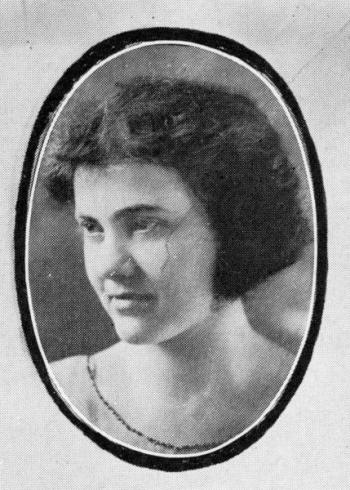
1921
Weather presented a problem again in 1921, but this time it was cold rather than rainy. The parade was restored this year. Following the parade, there were dances and the crowning of the queen, Anna Beatrice Decker.
Anna Decker was from Janesville. She was president of the YWCA and a member of the debating league. After graduation, she taught in Monticello, Iowa, where she met and married bank cashier Donald Sutherland. In 1925 she and her husband had a son. She died in 1930.
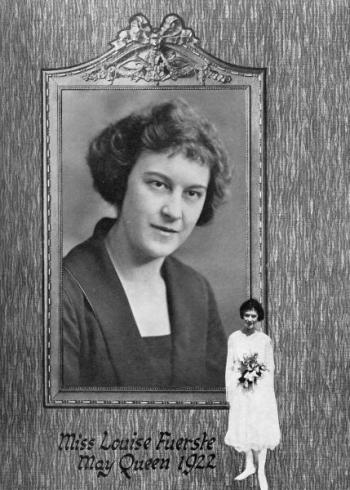
1922
The 1922 May Day celebration featured a long parade that included forty-one floats. In what must have been a moving patriotic experience, Teachers College students who were veterans of the Great War escorted Professors Melvin Arey and W. W. Gist, both veterans of the Civil War.
Louise Fuerste, an accomplished violinist who performed with the College Symphony Orchestra, was elected May queen by a large majority. She was from Guttenberg, Iowa. She married a Mr. Davies and died in 1978.
1923
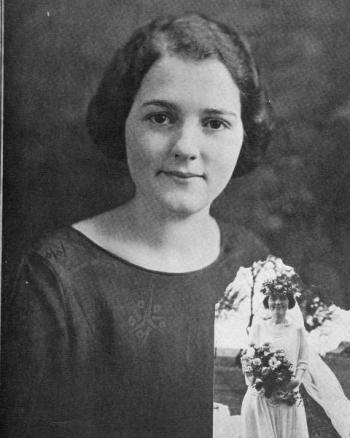
The 1923 May Day celebration was another large, successful affair. A reporter from the student newspaper estimated that four thousand people were on campus for the coronation of the queen and then the Maypole dances and presentations.
Dorothy Lumry, of Waterloo, was elected May Queen. She studied primary education, a two year curriculum, at the Teachers College. At least a few students were upset with her election, because they believed that May Queens should be selected only from those in the full, four year Bachelor of Arts curriculum. In 1931 she married Dr. Paul Southgate and moved to Lewistown, Montana, where Dr. Southgate maintained his medical practice.
1924
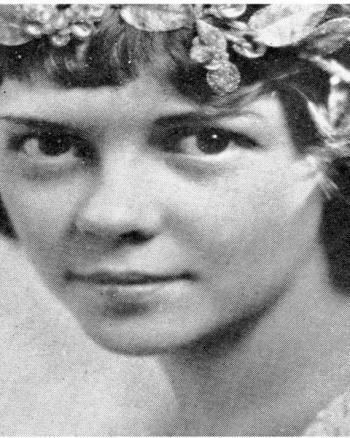
The scheduled date for the 1924 May Day celebration was cold and rainy, so the program was postponed for a day. It was still cold the next day, but the parade, the Maypole ceremonies, a concert by the Cedar Falls Municipal Band, and an evening social dance went fairly well. Unfortunately, one student was injured when the framework of the float on which she was riding collapsed. She was reported several days later as progressing well from her injuries.
Ruth Beagley, of Chariton, Iowa, was elected May Queen for 1924. She was a senior in the Bachelor of Arts curriculum. The student newspaper described her as "very dainty and pretty". After graduation, she taught in Clarion, Iowa. She later married a man named Williston.
1925
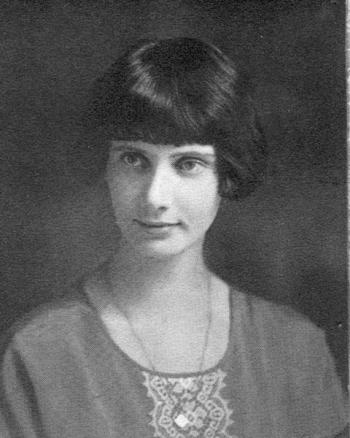
After several years of bad weather for the May Day celebration, the 1925 events were blessed with pleasant conditions. The parade went well as did the Maypole dances.
Helen Simpson McHugh, of Cedar Falls, was selected as the 1925 May Queen by a large majority. The McHugh family was well-known for its active participation in Cedar Falls civic affairs. Helen McHugh studied social science at the Teachers College and did a great deal of work with the Alpha Literary Society. She later married a man named Belding. She died in 1973.
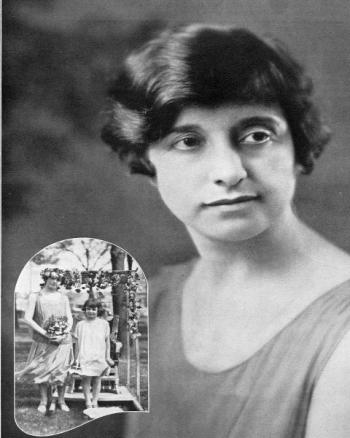
1926
The 1926 May Day program was curtailed to some extent because of plans for the upcoming celebration of the fiftieth anniversary of the Teachers College. The parade and the ceremonial classical dances were postponed. But there were still athletic events during the day and a big social dance in the evening featuring the "snappy Grettinger Orchestra" with their "latest selections".
Mrs. Elfa Porter was elected queen for the 1926 May Day celebration by a very close margin. This was the second time that a woman who had been married was elected queen. Mrs. Porter was almost certainly a widow, though available records do not state this with clarity. She had served on the faculty of the Teachers College training school from 1924 through 1926 as a Critic in Training. Critics in Training were preparing for the duties of the supervision and training of teachers. Mrs. Porter had taught third grade in Indiana, Pennsylvania. She had a daughter, pictured above, who participated with her in the May Day queen ceremonies.
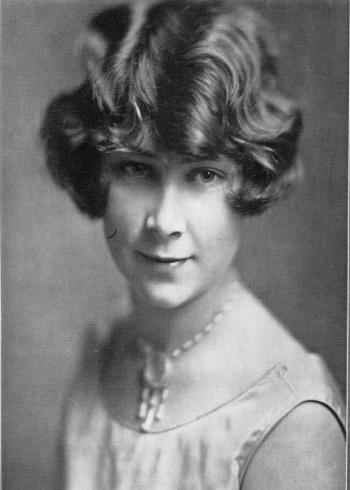
1927
The weather smiled on the 1927 May Day celebration. Queen Florence Reed was crowned and honored in the morning. And, after a picnic, the crowds moved to the athletic fields, where the literary societies performed stunts. The day concluded with the Teachers College baseball team defeating Coe College, 5-2.
Florence Reed was the daughter of Leslie Reed, the Teachers College Dean of Men. She studied physical education and was very active in campus affairs, especially Kappa Theta Psi and dance activities. After graduation she competed in a vocal contest that was broadcast over WHO radio. She received a Master of Arts degree from Columbia University and, in 1930, accepted a physical education faculty position at the University of Washington. She taught dance at that university until her marriage to George P. Horton in 1935. They became parents of a daughter in 1937. Florence Reed Horton died in 1994.
1928
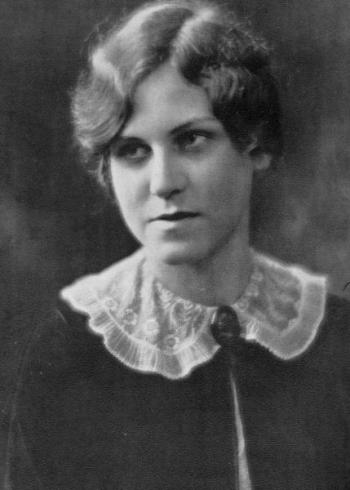
The 1928 celebration began with a social dance in the Women's Gymnasium on the evening before the formal May Day activities. The parade, coronation, and dances in honor of the May Queen took place in the morning. The afternoon featured picnics and a baseball game.
Jane Burkholder was a Teachers College senior when she married Donald Pettit in November 1927. Consequently, she was Jane Burkholder Pettit when she was elected queen of the 1928 May Day celebration. She was a physical education major, who participated in Orchesis, Phi Sigma Phi, and swimming activities. Following graduation, she completed a Master of Arts degree in physical education at the University of Iowa. She served on the women's physical education faculty of the Teachers College in several capacities from 1928 through 1933. She died in 1993.
1929
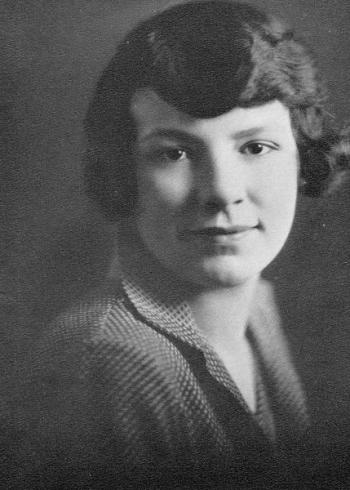
The 1929 celebration was quite similar to that of 1928. There was a social dance in the evening before May Day activities. And then the next day there was the coronation and interpretive classical dances associated with the Maypole.
Ann Perry was elected queen of the 1929 May Day celebrations. She had been a campus star, known to just about everybody. She was editor of the student newspaper, and a member of Pi Tau Phi, Playcraft Club, and Shield Club. Yet, just a week after the election, she learned that her father had died unexpectedly. Students showed their sympathy for her loss with a kind editorial statement in the student newspaper. But the potentially emotional ups and downs continued. Ann Perry's correct full name at the time of her election was Ann Perry Olson. She and C. Melvin Olson, a Teachers College alumnus, had been secretly married over the 1928 Christmas holiday. The secret was revealed at the May Queen luncheon in her honor, when tulips and the following little rhyme were distributed to guests:
Now that you have partaken of eat and of drink
Let tulips tell you of the happiest link,
Ann's name has been Olson
Since . . . when do you think?
The marriage was apparently a surprise to just about everyone. After she graduated, Mr. and Mrs. Olson made their home in Niagara, New York, where Mr. Olson worked as a chemist at an electrochemical company. They had at least one daughter. During World War II, Mrs. Olson worked as a safety officer with her husband's company.
1930
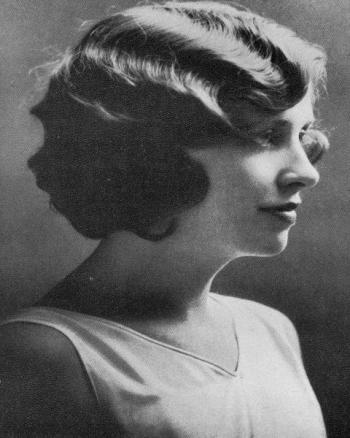
The 1930 May Day celebration was pared down, perhaps reflecting the nation's straitened economic conditions in the early days of the Great Depression. It may also have reflected the end of the time when the festival was an all-city event. But it did feature at least one new thing: students' mothers were invited to campus for the program. Because of the proximity on the calendar of Mother's Day to the May Day celebration, this subject had come up for consideration in earlier years. Certainly, students' parents had always been welcome to visit campus. But President Latham, as part of his overall public relations campaign for the Iowa State Teachers College, made this a special, three-day event for mothers.
Ruth Eells was elected by a large majority as the queen of the 1930 May Day celebration. She was a member of many student organizations and an officer in some of them. Her father, Harry Eells, was the head of the Teachers College rural education faculty. Following her graduation, she taught in Cherokee, Iowa. She married Lowell Carver in 1933. In an interesting sidelight, Mr. Carver had presented the May queen crown to Ruth Eells at the May Day celebration. Mr. Carver was a teacher in Grundy Center, Iowa; Geneseo, Illinois; and Kenosha, Wisconsin, before they moved to Ames, Iowa, where he had a position with Iowa State University. The Carvers had at least two children. Mrs. Carver died in 1990.
1931
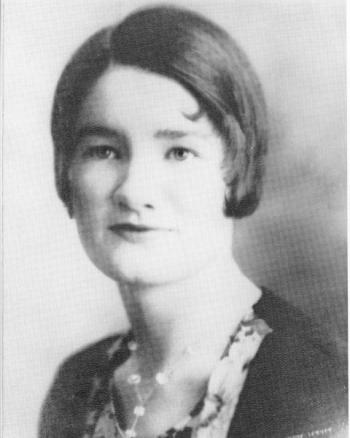
In 1931, the Teachers College continued the weekend event for mothers with May Day programs as part of the celebration. Cold, rainy weather prevailed, so most events had to be moved indoors. Those events included a luncheon, skits, a tea, and the senior prom. About three hundred mothers attended.
Alice Dowden was elected by just one vote to serve as May queen in 1931. At a time when redheaded students occasionally formed their own whimsical social groups, such as Rho Tau, the student newspaper noted that Miss Dowden was the first redhead to be elected queen. She participated in musical and drama productions and even took part in a redheaded co-ed chorus in the Tutor Ticklers campus variety show. After graduation, she became high school principal at Van Cleve, Iowa. She married Teachers College alumnus Wendell Bragonier in 1934. The Bragoniers moved initially to Ft. Dodge, Iowa, where Mr. Bragonier taught in the high school, and then to Des Moines, where he taught at Lincoln School. After studying at Iowa State University, Mr. Bragonier became head of the botany faculty at that school. The Bragoniers had at least two children. Mrs. Bragonier died in 1986.
1932
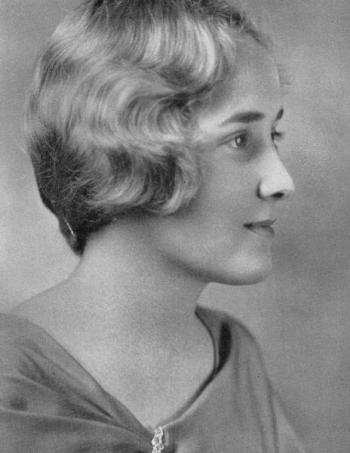
Events continued much the same for May Day celebrations in 1932. And so did the bad weather. Visiting mothers were again herded indoors for concerts, plays, teas, luncheons, and Maypole ceremonies.
Mary D. Anderson, of Tripoli, Iowa, won a close election to serve as Queen of the May in 1932. Miss Anderson majored in speech and was a member of the executive council of the Women's League. She was a member of Delta Sigma Rho, the national forensic fraternity. She participated in eleven intercollegiate debates. After graduation, she served as stenographer to President Latham and secretary in the office of the Dean of Women. In 1937 she married Teachers College alumnus Dr. Robert M. McDowell, who established his dental practice in Denver, Colorado. The McDowells had two children. Mrs. McDowell died in 1992.
1933
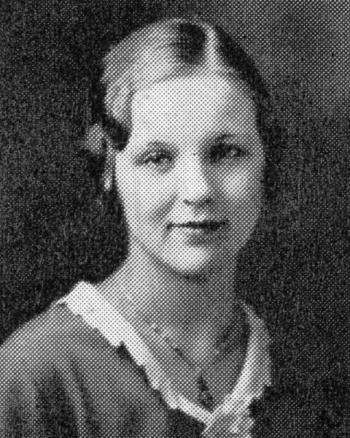
By 1933, May Day had become just a part of what was promoted as Mother's Day weekend. Saturday's May Day events included a concert, Maypole dances, and the coronation of the queen. The weekend as a whole had become a major campus production.
Betty M. Winans, a member of Alpha Beta Gamma, won the May Queen election in 1933. In 1935 she married Teachers College alumnus Don Cook.
1934
The 1934 May Day celebration featured four Maypoles decorated in different colors. Over three hundred mothers attended the series of events that weekend.
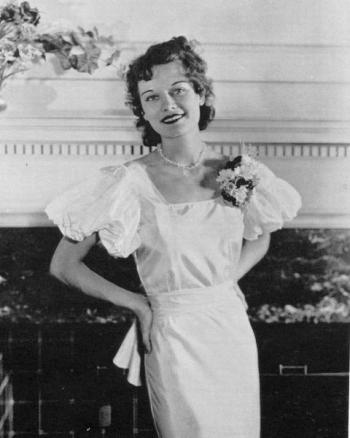
Lorinne Carson Crawford was elected Queen of the May for 1934. She would be the last May Queen to reign over a formal, all-school May Day celebration. Lorinne Crawford was a remarkable young woman who went on to live a full, productive, and adventurous life. At the time of her election, she was a senior and a member of Alpha Beta Gamma social sorority. She was a member of the Playcraft Club, Shield Club, Orchesis, and the Life Saving Corps. Her hobby was dance. She was also featured prominently in the 1934 Old Gold, the school yearbook. In those days the yearbook included pictures of good-looking and popular men and women students. Yearbook editor Robert Brown sent photos of women students to Bing Crosby. Mr. Crosby selected Lorinne Crawford as the most beautiful woman on campus. And, perhaps without being completely serious, Mr. Crosby invited Miss Crawford to meet him if she ever got to Hollywood. The summer after her graduation, she worked in Yellowstone National Park. When her summer job ended, she went to California to enter a dance school. She also took up Mr. Crosby on his invitation.
Lorinne Crawford met with Bing Crosby. In September 1934, he gave her a small part in his movie "College Rythym". Over the next year or so, under contract with Paramount, she appeared in several more movies, including "Love Me Forever" and "Redheads on Parade". Miss Crawford's work tended to be as a member of a chorus or dance group, though she did get an occasional speaking line. In a letter to a friend she said that she enjoyed watching big name stars such as Greta Garbo, Clark Gable, Jean Harlow, and Robert Montgomery do their work. She also did modeling work for several leading magazines.
In 1935 Miss Crawford was part of a group of twelve young dancers, known as the "Hollywood Starlets", who were under contract to perform in Europe for a year. The dance troupe was based at the Dorchester Club in London, where they did two shows a night. The troupe also had long engagements in Paris and Monte Carlo. They were free during the day, so Miss Crawford took advantage of the opportunity to visit all of the sights in those exotic places.
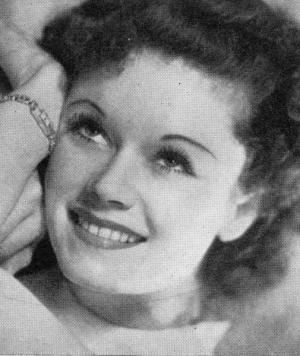
Miss Crawford was to have returned to the United States in early 1937. Those plans changed, however, when she married Frederick M. Thomas, chief aeronautical engineer for DeHavilland Aircraft Company in London. The Thomases stayed in England until the spring of 1940, when Mrs. Thomas and a new baby daughter were evacuated to the United States to escape the Blitz.
After World War II the growing Thomas family lived in Vermont, Massachusetts, Texas, and California. After a short stay in New Zealand, the family moved back to southern California. Mrs. Thomas studied at the University of Southern California. She worked as a teacher of the deaf and, later, as a librarian for Los Angeles County. She was the author of A Study of Observable Aspects of Behavior in Preschool Deaf Children and Exploration of Relationship of These Behaviors to Lip Reading Progress, published by the University of Southern California in 1956.
In 1980 she moved to Old Mystic, Connecticut, where she lived until her death, at the age of 97, in 2010. She was survived by five children, eight grandchildren, and eight great-grandchildren.
The End of the May Day Celebrations
In October 1934, the Student Council voted to discontinue May Day activities. Council President David Grant stated that there were other ways in which students could display their creative talents, such as the increasingly popular Tutor Ticklers variety show. There might have been other reasons for the decision such as difficult weather, limited finances, and, simply, changing times. Perhaps students of that era no longer appreciated May Day traditions or the classical dance productions that were a major feature of the celebrations. Perhaps they wanted something just a bit more upbeat and modern.
There seemed to be little or no protest against the decision. The Training School as well as several collegiate groups continued limited May Day celebrations, usually on a sporadic basis, for some years. The Men's Union even elected a May Queen at their spring dance, the May Frolic, for several years. But the large, formal, all-school May Day celebrations were done.
Over their twenty year run, May Day celebrations had been an important part of the Teachers College social and entertainment calendar. In the early years, the activities brought the whole community to campus. In later years, the activities encouraged the involvement of students' parents in campus matters. May Day celebrations also allowed students to display their creative talents in building floats, performing classic dance, and even running for May Queen. Most of those May Queens went on to productive lives and even distinguished careers. Almost certainly, the students, the college, and the community as a whole benefited from the experience gained from Teachers College May Day celebrations.
Original display developed by Library Assistant Joy Lynn, May 2013; Web version by University Archivist Gerald L. Peterson, July 2013; last modified, July 31, 2013 (GP); photos updated and citations added by Graduate Assistant Eileen Gavin, May 12, 2025
